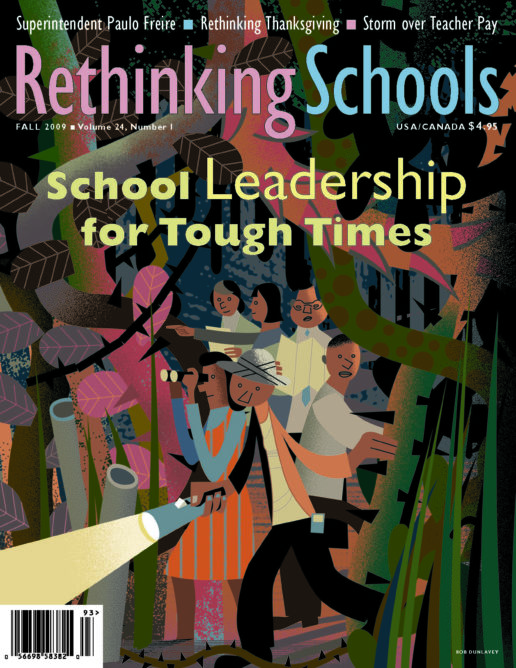Preview of Article:
Exile Has Its Place: A High School Principal Reflects on School Discipline
Illustrator: David McLimans
-James Baldwin
Exile has its place. As an age-old human response to conflict, its potential value to the healthy maturation of students and the school community should not be discounted.
Exile or ostracism goes by various names in school. Students are told: Move your desk. Leave the classroom and wait in the hall. Go to the office. Go to detention. You’re suspended.
There are those in progressive education circles who dismiss suspension as a careless traditional response to a situation better addressed by counseling and alternative, restorative justice methods. Others aptly note that the power to suspend is often abused: used to push out students who might challenge us, thus furthering systemic neglect and mistreatment. If done right, however, suspension, or exile, can be the first step in a restorative process, and a meaningful and fair response to the violation of community values.

